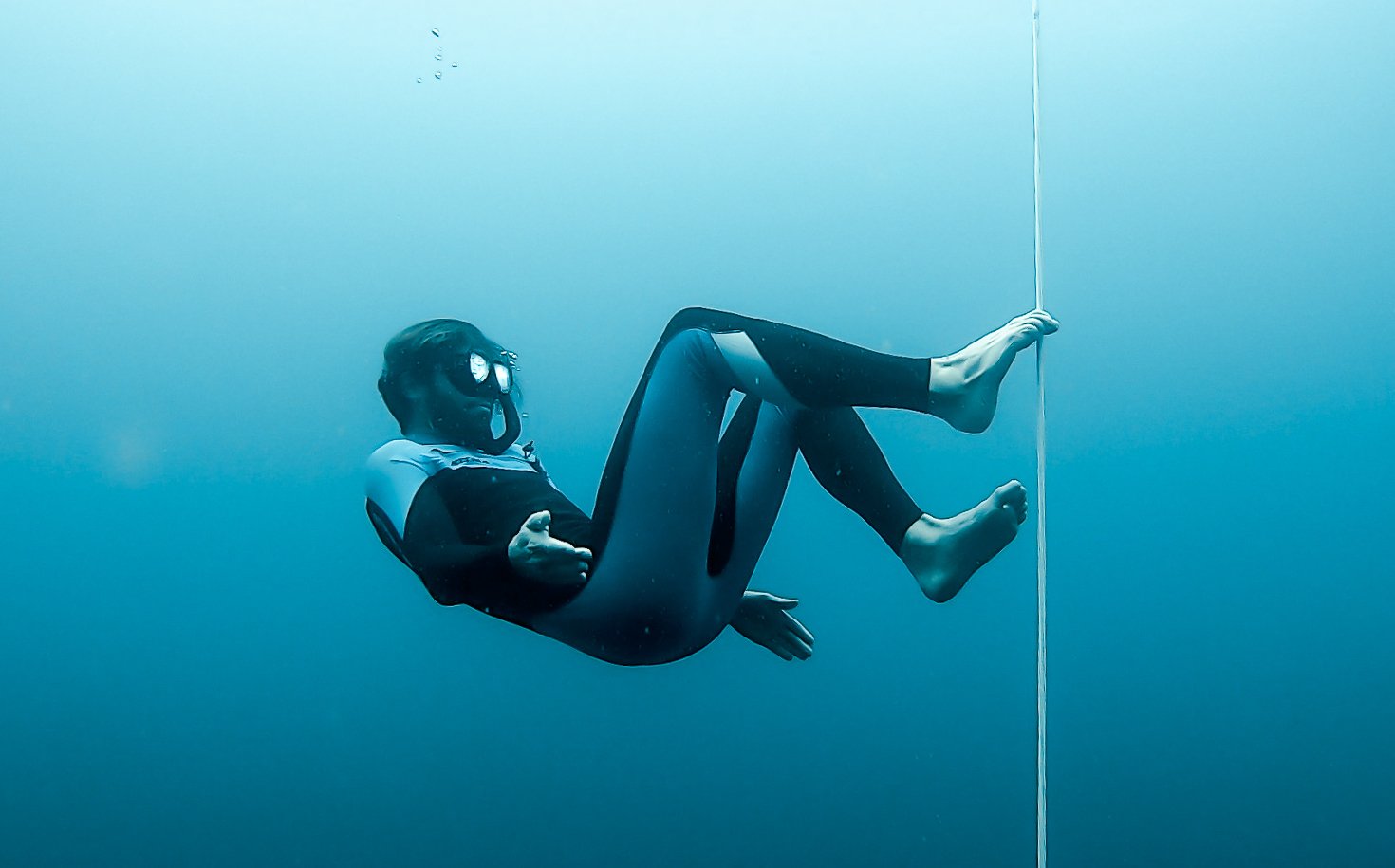FREEDIVING: EAR PAIN AND EQUALISATION
The most common complaint I hear from new divers is ear-related freediving equalisation problems, ear pain, or just knowing how to equalise. In this post, I’ll explain why it’s important to equalise, how it prevents ear pain and mask squeeze. I will share some techniques and tips that you can practice on dry land before getting in the water.
If you’ve been through all of these techniques and you still can’t equalise, check out my tips to solve equalisation problems to find out what’s going wrong.
WHY DO YOU GET EAR PAIN WHEN YOU DIVE?
On land, our bodies are smart enough to manage all kinds of changers in atmosphere on their own. That’s why your ears naturally pop when you change altitude fast. When you dive underwater, the water pressure increases fast, especially in the first few metres. Your body is full of airspaces, which get squeezed as the air contracts under the pressure. In particular, the air in your sinuses and ears gets squeezed, causing pain. The same thing happens with the air inside your diving mask. To balance out this pressure, you need to put air back into our airspaces. This is called equalising.
When it’s successful, equalisation feels like a small ‘pop’ inside your ear, relieving the pressure. If you don’t equalise your ears and you keep descending under water, you will feel a lot of pain and eventually damage your eardrum. You should be equalising constantly as your descend, before it hurts. When it comes to your mask, equalising simply relieves the ‘sucking’ feeling of the mask on your face.
As a beginner, I had major equalisation problems. I’d learnt bad techniques through scuba-diving, and the more irritated I got, the less able I was to control the muscles and anatomy I needed to equalise properly.
Equalisation problems are super frustrating. Hopefully, you will be able to use the tips here to practice your technique on dry land, so that you have a little less to think about once you’re in the water.
HOW DOES EQUALISATION WORK?
If you’ve ever scuba-dived, you’ve probably heard a whole range of tips – yawn, swallow, blow through your nose. You probably found one of these methods successful.
But now you are a freediver, and everything you do is upside-down, on a breath-hold. Things are a little more complicated.
First thing’s first. Do not swallow. When you swallow during freediving, you swallow air. Air contains oxygen. Oxygen is valuable and no good to you sitting in your stomach.
Now that that’s cleared up, let’s talk about the 2 main equalisation techniques: Valsalva and Frenzel.
Valsalva is the method typically used by beginners and scuba-divers. It involves using your tummy muscles to blow air into your nose whilst you hold your nose closed. The surge of air fills your sinuses and equalises your ears. The Valsalva manoeuvre creates an intense ‘pop’ and can be sore, especially if only one ear clears. Generally, you might struggle to equalise effectively using this technique whilst freediving. It’s difficult to do upside down, it requires force, and it generally gets divers no deeper that a few metres.
The more effective method for freediving equalisation is called the Frenzel technique. This technique uses only the the mouth and throat to equalise. Specifically, you use the soft palate, the tongue, and the glottis to push air into the sinuses. Our tummies stay relaxed.
FRENZEL EQUALISATION: THE STEPS
Squash this bitch
Exhale so you can’t cheekily force air up with your stomach
‘Close your glottis’. This sounds weird, but all you have to do to engage your glottis is to block air when breathing out. Practice by breathing out through your mouth and cutting the air off.
Close your lips, pinch your nose, and place the tip of your tongue behind your top front teeth.
Imagine that you have a huge marshmallow on your tongue, and your job is flatten that thing against the roof of your mouth. Roll your tongue up to the top of your mouth, squashing the imaginary marshmallow, from the front to the very back of your tongue.
You should feel something happening inside your ears and nose. It might not be as violent a ‘pop’, but you’ll hear a change in sound and pressure inside your ear. Your nostrils will also flare out a little.
YOU HAVE EQUALISED!
Practice this again and again on land until you don’t have to think about it.
Here are two of my favourite videos which describe the Frenzel technique, from 2 incredible freedivers: Emma Farrell and Adam Stern
MASK EQUALISATION
This is a lot simpler, thank god. In order to equalise your mask, you simply need to blow a tiny bit of air from your nose to refill the mask’s volume. This is the main reason that we use low volume masks in freediving – the smaller the mask, the less you need to equalise.
This is also the reason that you have bubbles squirt from your mask as you reach the surface on your ascent. All the excess air bubbles back out of the mask as it expands. Again, remember that oxygen is seriously precious. Do not waste is by blowing more air than you need to fill your mask. Bubbles should not be escaping on your way down.
WRAP UP
If you’ve tried all the techniques and tips and you’re still can’t equalise properly, check out my troubleshooting post to solve freediving equalisation problems.
If you found this helpful please share with friends and comment below. I want to make this content helpful so please get in touch with feedback and ideas!




